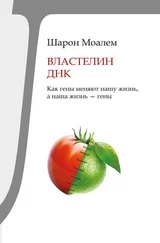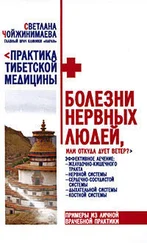P. Gazerani and L. Arendt- Nielsen. 2005. The impact of ethnic differences in response to capsaicin-induced trigeminal sensitization. Pain 117(1–2):223–229.
71. A. Mathew, P. Gangadharan, C. Varghese, and M. K. Nair. 2000. Diet and stomach cancer: a case-control study in South India. Eur J Cancer Prev 9(2):89–97;
G. Jancso and S. N. Lawson. 1990. Transganglionic degeneration of capsaicin- sensitive C-fiber primary afferent terminals. Neuroscience 39(2):501–511;
D. H. Wang, W. Wu, and K. J. Lookingland. 2001. Degeneration of capsaicin-sensitive sensory nerves leads to increased salt sensitivity through enhancement of sympathoexcitatory response. Hypertension 37 (2 Pt 2):440–443.
Большое количество статей было посвящено пользе капсаицина. Вот лишь некоторые из них:
E. Pospisilova and J. Palecek. 2006. Post- operative pain behavior in rats is reduced after single high-concentration capsaicin application. Pain [Электронная публикация 21 июня 2006, до выхода в печать];
A. L. Mounsey, L. G. Matthew, and D. C. Slawson. 2005. Herpes zoster and postherpetic neuralgia: prevention and management. Am Fam Physician 72(6):1075–1080;
Mary Ann Ryan, “Capsaicin Chemistry Is Hot, Hot, Hot!” American Chemical Society, 24 марта 2003.
72. N. Soranzo, B. Bufe, P. C. Sabeti, et al. 2005. Positive selection on a high-sensitivity allele of the human bitter-taste receptor TAS2R16. Curr Biol15(14):1257–1265;
B. Bufe, T. Hofmann, D. Krautwurst, et al. 2002. The human TAS2R16 receptor mediates bitter taste in response to beta-glucopyranosides. Nat Genet 32(3):397–401.
73. A. Drewnowski, S. A. Henderson, A. B. Shore, and A. Barratt-Fornell. 1997. Nontasters, tasters, and supertasters of 6-n-propylthiouracil (PROP) and hedonic response to sweet. Physiol Behav 62(3):649–655;
G. L. Goldstein, H. Daun, and B. J.Tepper. 2005. Adiposity in middle-aged women is associated with genetic taste blindness to 6-n-propylthiouracil. Obes Res 13(6):1017–1023.
См. стр. 118-123 в:
G. P. Nabhan, Why Some Like It Hot: Food, Genes, and Cultural Diversity (Washington, DC: Island Press/Shearwater Books, 2004).
74. Потрясающее изображение возбудителей фитофтороза вы сможете найти по ссылке:
http://helios.bto.ed.ac.uk/bto/microbes/blight.html
75. В следующей статье рассказывается про женщину шестидесяти пяти лет, у которой возникла серьезнейшая аллергическая реакция на коже после того, как она съела в большом количестве корнеплод сельдерея (Apium graveolens) и сходила в солярий:
B. Ljunggren. 1990. Severe phototoxic burn following celery ingestion. Arch Dermatol 126(10):1334–1336.
Также читайте:
L. Wang, B. Ster l ing, and P. Don. 2002. Berloque dermatitis induced by “Florida water.” Cutis 70(1):29–30;
Institute of Medicine (U.S.). Committee on Identifying and Assessing Unintended Effects of Genetically Engineered Foods on Human Health, Safety of Genetically Engineered Foods: Approaches to Assessing Unintended Health Effects (Washington, DC: National Academies Press, 2004), 44.
76. A. Yoshida and E. F. Roth Jr. 1987. Glucose-6-phosphate dehydrogenase of malaria parasite Plasmodium falciparum. Blood 69(5):1528–1530;
C. Ruwende and A. Hill. 1998. Glucose- 6-phosphate dehydrogenase deficiency and malaria. J Mol Med 76(8):581–588;
F. P. Mockenhaupt, J. Mandelkow, H. Till, et al. 2003. Reduced prevalence of Plasmodium falciparum infection and of concomitant anemia in pregnant women with heterozygous G6PD deficiency. Trop Med Int Health 8(2):118–124;
C. Ruwende, S. C. Khoo, R. W. Snow, et al. 1995. Natural selection of hemi- and heterozygotes for G6PD deficiency in Africa by resistance to severe malaria. Nature 376(6537):246–249.
77. См. стр. 69-83 в:
E. Barnes, Diseases and Human Evolution (Albuquerque: University of New Mexico Press, 2005);
А также стр. 715–122 в:
K. J. Ryan, C. G. Ray, and J. C. Sherris, Sherris Medical Microbiology: An Introduction to Infectious Diseases (New York: McGraw-Hill, 2004).
Про невероятно богатую историю малярии читайте:
K. F. Kiple, The Cambridge World History of Human Disease (New York: Cambridge University Press, 1993).
Читайте потрясающий рассказ о проблемах, связанных с малярией во время беременности, на официальном сайте Всемирной организации здравоохранения:
www.who.int/features/2003/04b/en/.
Обзор распространенности малярии в мире, а также рисков для путешественников, включающий в себя карты, читайте по ссылке:
www.ncid.cdc.gov/travel/yb/utils/ybGet.asp?section=dis&obj=index.html.
78. Гиппократ. «О воздухах, водах и местностях».
79. M. Susser. 2001. Glossary: causality in public health science. Epidemiol Community Health 55:376–378.
80. Более подробно про эту невероятную историю читайте:
James Burke, “Cool Stuff” Scientific American, июль 1997;
Также читайте 10-ю главу в:
J. Burke, Connections (Boston: Little, Brown, 1995)
81. J. Lederberg. 1999. J. B. S. Haldane (1949) on infectious disease and evolution. Genetics 153(1):1–3.
Биографию Халдана и про его идеи читайте на стр. 141–223 в:
M. Kohn, A Reason for Everything: Natural Selection and the English Imagination (London: Faber and Faber, 2004).
82. P. R. Mayeux, K. C. Agrawal, J. S.Tou, et al. 1988. The pharmacological effects of allicin, a constituent of garlic oil. Agents Actions 25(1–2):182–190;
M. Zanolli. 2004. Phototherapy arsenal in the treatment of psoriasis. Dermatol Clin 22(4):397–406, viii;
M. Heinrich and P. Bremner. 2006. Ethnobotany and ethnopharmacy – their role for anticancer drug development. Curr Drug Targets 7(3):239–245;
X. Sun and D. D. Ku. 2006. Allicin in garlic protects against coronary endothelial dysfunction and right heart hypertrophy in pulmonary hypertensive rats. AmJPhysiolHeartCircPhysiol (Электронная публикация 26 мая 2006, до выхода в печать).
Глава 5: О микробах и людях
83. Donald G. McNeil Jr., “Dose of Tenacity Wears Down a Horrific Disease,” New York Times, 26 марта 2006.
Исчерпывающая статья о программе Картера по искоренению паразита:
E. Ruiz-Tiben and D. R. Hopkins. 2006. Dracunculiasis (Guinea worm disease) eradication. Adv Parasitol 61:275–309.
Подробный обзор на эту тему читайте в:
R. Muller. 1971. Studies on Dracunculus medinensis (Linnaeus). II. Effect of acidity on the infective larva. JHelminthol 45(2):285–288.
Самое же интересное про развитие паразита читайте на стр. 788–795 в:
P. Manson and P. H. Manson-Bahr, Manson’s Tropical Diseases: A Manual of the Diseases of Warm Climates (Baltimore: W. Wood and Co. 1936).
Дополнительную информацию о героических и масштабных достижениях Центра Картера ищите на www.cartercenter.org.
Читать дальше
Конец ознакомительного отрывка
Купить книгу











